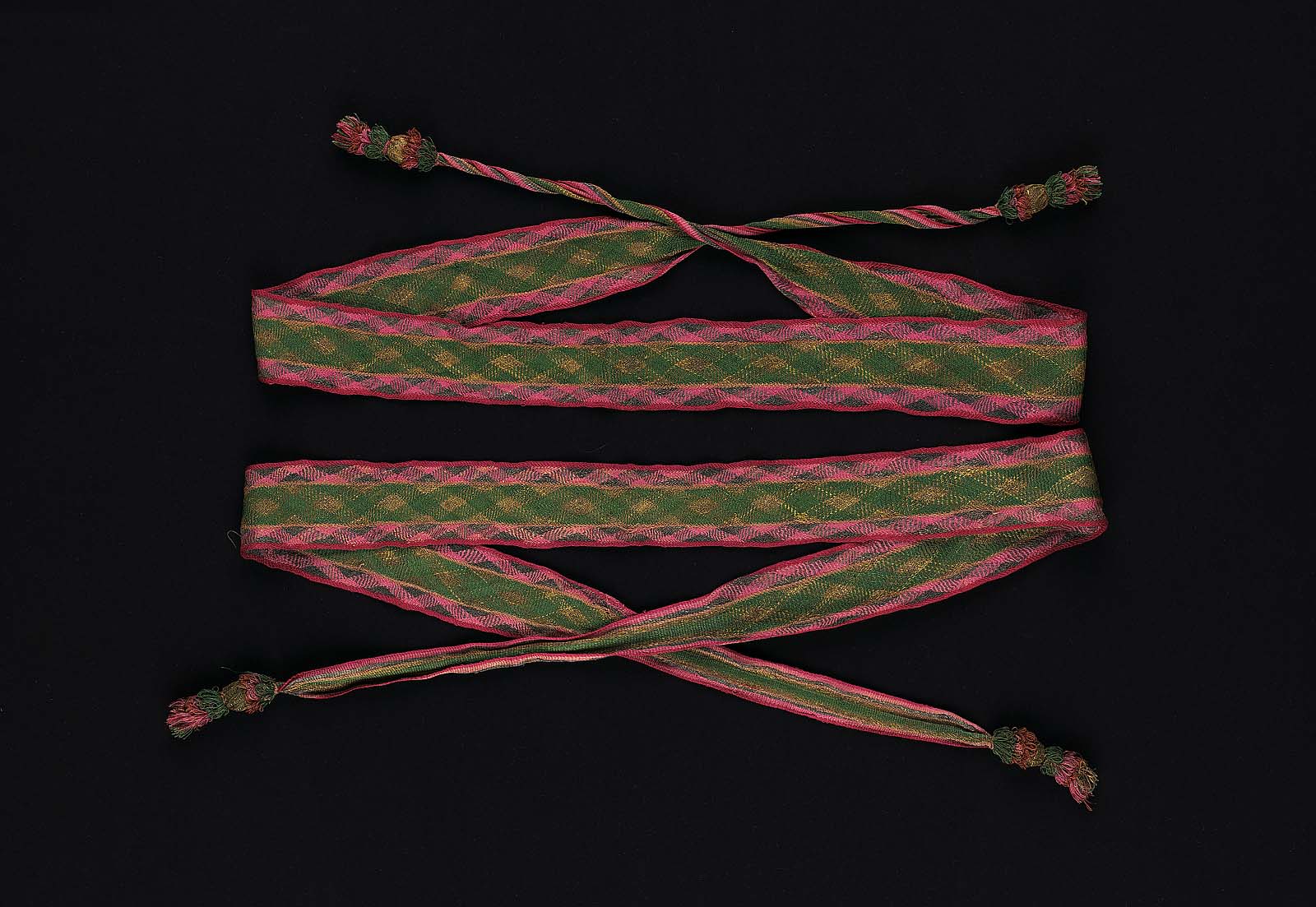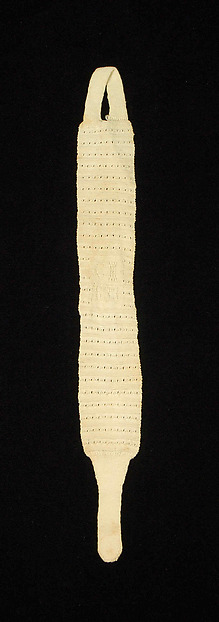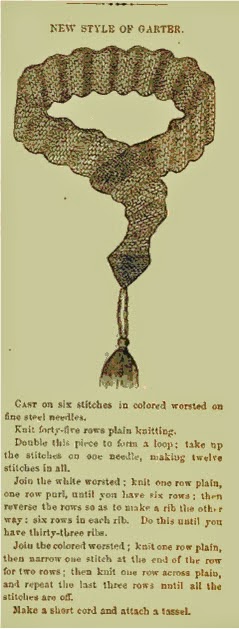There are a few different styles of garters used in the mid-19th century. One is a flat band or ribbon, a style which has been in use for several centuries to this point.
 |
| Silk garter, c.1862. Museum of Fine Arts. |
 |
| Silk garter, late 16th century. Museum of Fine Arts. |
 |
| Wool embroidered (Berlin work) garters, c. 1801-1850, Smithsonian Design Museum. |
"Cast on 18 stitches. Knit in double knitting backwards and forwards until the garter is long enough. End in a point." --The Ladies' Self-Instructor..., page 180
Another knitting book notes that "Elastic Rib...as its name implies, is the appropriate stitch for garters", and goes on to explain using alternate knit and purl rows to create a stetchy material. "Garter stitch", on the other hand, is plain knitting. The Method for Teaching Plain Needlework in Schools (1861) recommends that students knit both plain and ribbed garters to practice knitting and purling, respectively.
A second style of mid-century garter has a loop appended to the flat band. The few examples I've seen are a springy knit material; the flat end is threaded through the loop (and in my experience, needs to be knotted to keep the garter in place).
 |
| Cotton garter, c. 1833, from The Met. |
 |
| Instructions for knit garter with loop, tassel. Appeared in Godey's, 1862. Reproduced here. |
 |
| Garters with chenile embroidery, silk/elastic band and metal clasps. Early 19th century. Museum of Fine Arts. |
 |
| Garter buckles dated 1864, from Historic New England. |
There is a potential fourth style, fabric over a stretchy core, like modern novelty garters. However, I've only seen one such, this pink silk pair,c. 1851-1880 from the Museum of London, and need to investigate further.
No comments:
Post a Comment